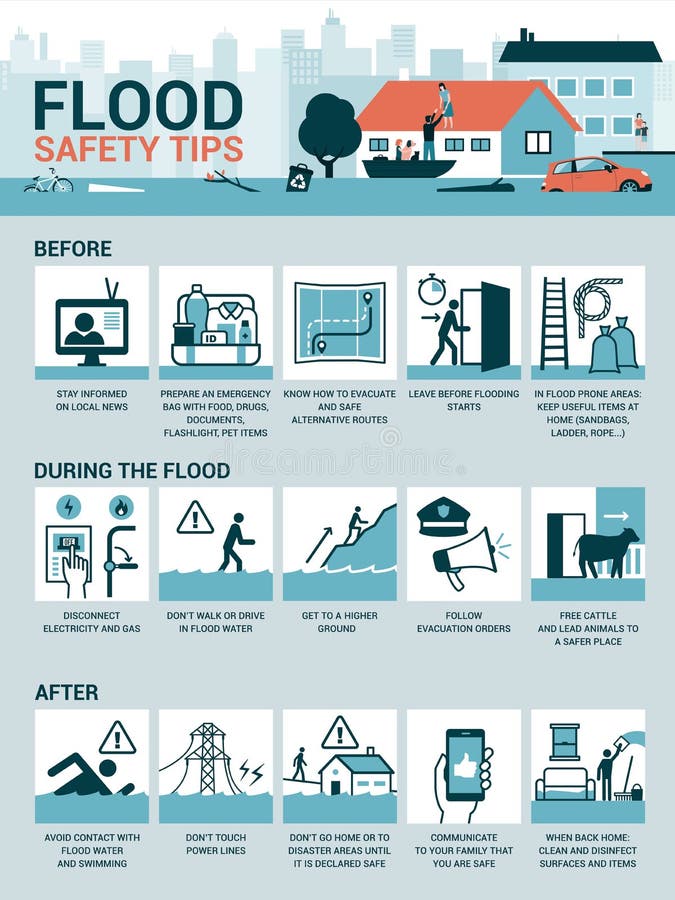Responding To A Flash Flood Emergency: Safety Tips And Procedures

Table of Contents
Understanding Flash Flood Risks and Warnings
Recognizing Flash Flood Warning Signs:
Flash floods are characterized by a rapid rise in water levels, often with devastating consequences. Recognizing the warning signs is the first step in protecting yourself. These signs can include:
- Rapidly rising water levels: Observe streams, rivers, and creeks closely. A sudden and significant increase in water level is a major red flag.
- Heavy and persistent rainfall: Prolonged, intense rainfall, especially in areas with poor drainage, significantly increases the risk of flash flooding.
- Sudden changes in water color or debris in the water: A change in water color, usually to a muddy brown, indicates increased runoff and sediment. The presence of debris like branches and logs is another clear sign.
- Unusual sounds such as roaring water: A noticeable increase in the sound of rushing water, even from a distance, can signal a flash flood developing upstream.
- Official warnings from local authorities: Pay close attention to weather reports, news broadcasts, and official warnings issued through NOAA Weather Radio, local emergency services, or mobile alerts. These are critical for flash flood preparedness.
Understanding Flash Flood Watches and Warnings:
Understanding the difference between a watch and a warning is critical in a flash flood situation.
- Flash Flood Watch: A flash flood watch means conditions are favorable for flash flooding. This is not an immediate threat, but it's a signal to stay informed, monitor weather reports closely, and prepare for potential flooding. Prepare your emergency kit and know your evacuation route.
- Flash Flood Warning: A flash flood warning indicates that flash flooding is occurring or is imminent. This is a serious alert requiring immediate action. Evacuate immediately if instructed.
Identifying High-Risk Areas:
Knowing which areas are prone to flash flooding can help you prepare and stay safe. High-risk areas typically include:
- Low-lying areas near rivers, streams, and canyons: These areas are naturally susceptible to rapid water accumulation during heavy rainfall.
- Areas with poor drainage: Areas with inadequate drainage systems are more likely to experience flash flooding.
- Areas with a history of flash flooding: Past incidents are a strong indicator of future risk. Check local records or community resources to identify these areas.
Immediate Actions During a Flash Flood Emergency
Evacuation Procedures:
If a flash flood warning is issued, immediate evacuation is crucial. Follow these steps:
- Follow evacuation orders immediately: Obey instructions from local authorities without delay. Your life is at risk.
- Move to higher ground, away from flood-prone areas: Seek higher ground, ideally to a designated evacuation shelter or the home of a friend or family member outside the flood zone.
- Take essential documents and supplies with you: Gather important documents (insurance papers, IDs), medications, and a change of clothes in a waterproof bag.
- Never attempt to drive through flooded areas: Even seemingly shallow water can be deceptively dangerous. The force of the water can easily sweep away vehicles.
Seeking Shelter:
If evacuation isn't possible, take these steps:
- If evacuation is not possible, move to the highest level of your home: Go to the upper floors of your house or building.
- If trapped in a vehicle, get out immediately and move to higher ground: Do not stay in a car during a flash flood. The vehicle can be swept away.
- Avoid basements and low-lying areas: These areas are the most vulnerable to rapid flooding.
Protecting Yourself and Your Property:
Take steps to protect yourself and your possessions:
- Move valuables to upper floors: Elevate furniture and other important items to minimize damage.
- Turn off utilities (electricity, gas): This is crucial to prevent electrical shocks and gas leaks.
- Avoid contact with floodwaters – they are often contaminated: Floodwaters carry harmful bacteria, chemicals, and debris.
Post-Flash Flood Emergency Procedures
Assessing Damage and Reporting:
After the flash flood subsides, carefully assess the situation:
- Check for structural damage to your home: Look for cracks, damage to foundations, and other signs of structural compromise. Avoid entering damaged structures until they have been professionally inspected.
- Report damage to local authorities: Contact your local emergency services or disaster relief agency to report damage and request assistance.
- Avoid entering flood-damaged buildings until inspected: Flood-damaged buildings can be unstable and dangerous.
Cleaning and Sanitation:
Cleaning up after a flash flood requires caution:
- Floodwaters are contaminated: Use appropriate protective gear (gloves, boots, masks) when cleaning.
- Dispose of spoiled food and contaminated items properly: Follow local guidelines for waste disposal.
- Disinfect affected areas thoroughly: Use a bleach solution or other appropriate disinfectant to sanitize affected areas.
Insurance and Financial Assistance:
Contact your insurance provider and explore available aid:
- Contact your insurance provider to report damages: File a claim as soon as possible to initiate the insurance process.
- Inquire about available financial assistance programs: Contact your local government or disaster relief agencies for information about assistance programs.
Conclusion
Being prepared for a flash flood emergency is crucial for your safety and the safety of your loved ones. By understanding the risks, heeding warnings, and following the safety procedures outlined in this guide, you can significantly reduce your vulnerability during a flash flood. Remember, a swift response to a flash flood warning is paramount. Staying informed and knowing what to do in a flash flood emergency will minimize risks and enhance your chances of surviving this potentially life-threatening event. Develop your personal flash flood emergency plan today!

Featured Posts
-
 Buy And Hold Investing Facing The Challenges Of Long Term Growth
May 25, 2025
Buy And Hold Investing Facing The Challenges Of Long Term Growth
May 25, 2025 -
 Zal De Snelle Marktdraai Van Europese Aandelen Ten Opzichte Van Wall Street Aanhouden
May 25, 2025
Zal De Snelle Marktdraai Van Europese Aandelen Ten Opzichte Van Wall Street Aanhouden
May 25, 2025 -
 Dreyfus Affair Proposed Posthumous Honor For A Wronged Officer
May 25, 2025
Dreyfus Affair Proposed Posthumous Honor For A Wronged Officer
May 25, 2025 -
 Kerings Q1 Results Trigger 6 Share Price Fall
May 25, 2025
Kerings Q1 Results Trigger 6 Share Price Fall
May 25, 2025 -
 Heineken Revenue Results Above Expectations Outlook Confirmed
May 25, 2025
Heineken Revenue Results Above Expectations Outlook Confirmed
May 25, 2025
